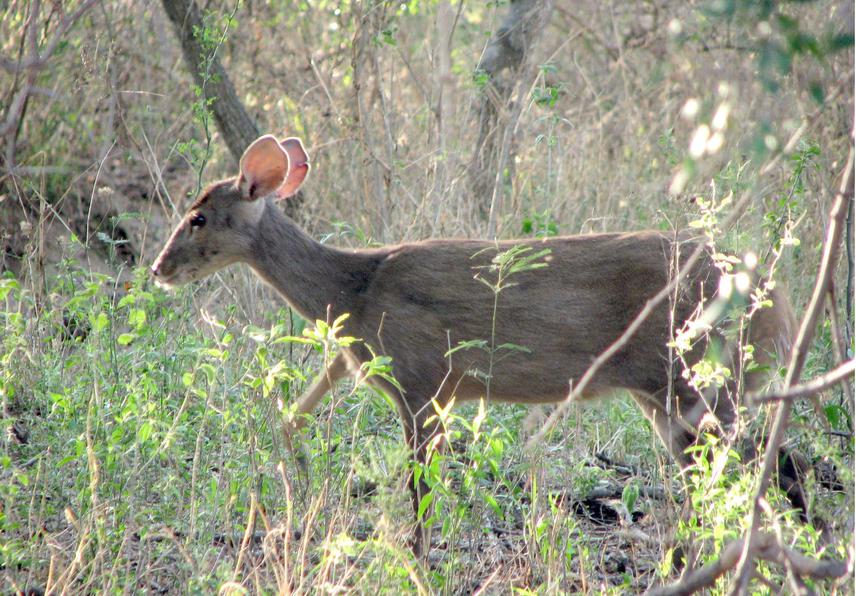Maria E Periago
Other projects
10 Mar 2006
Density Estimates of Grey Brocket Deer in Chancaní Reserve, Córdoba, Argentina
31 Jul 2009
How are Gray Brocket Deer, Mazama Gouazoubira, Populations Affected by Different Land Use Practices in the Arid Chaco of Argentina?
The aim of this project is to evaluate the effects of overgrazing and deforestation in surrounding areas on the brocket population using the results obtained in the first part of this project as a reference. The results of this project will be an important contribution to the knowledge of the species’ status outside the Reserve and its role in its conservation.

Individual gray brocket deer registered by the trip camera.
The Chaco region is highly degraded due to a long history of deforestation for timber and agriculture which led to almost complete loss of open grass and herb strata in forest patches. Despite the magnitude of the resulting habitat changes, information on the effect of overgrazing-induced vegetation changes on wildlife are very limited. The status of the Chancaní Reserve as the only protected area of this arid section of the Chaco is key to the survival of the ecosystem. This reserve provides a unique opportunity for assessing changes in brocket deer density and its association with changes in the vegetation structure, considering that the Reserve preserves a relict of the original vegetation of the Chaco system.
There are no previous studies determining whether it is an effective conservation unit, or if it is serving its purpose as a source in the population dynamics of the region. Recent studies by this group established a brocket deer population of approximately 5.26 individuals/km2 in the Reserve. It seems necessary, in continuation with this project, to establish density variations related to different land use and management. This study aims to evaluate not only the abundance of the species in areas under human exploitation, but also the importance of the wildlife reserve. As one of the last patches of natural vegetation in the area, the reserve should function as a refuge for large species such as the brocket deer, as well as for all flora and fauna. In what manner do human practices, overgrazing and deforestation, in the region affect the deer populations? Does it serve its purpose as a haven and relict of the ecosystem? Is it optimum habitat for the species? Can we use it as a guide to reforestation in neighbouring lands?
The findings of this study would help establish the reserve in the area in order to reaffirm its role for wildlife and be used further as guides of habitat suitability in reforestation projects. The project's success will be measured through a better assessment of the current situation of the brocket deer, the Reserve and the surrounding ecosystem.